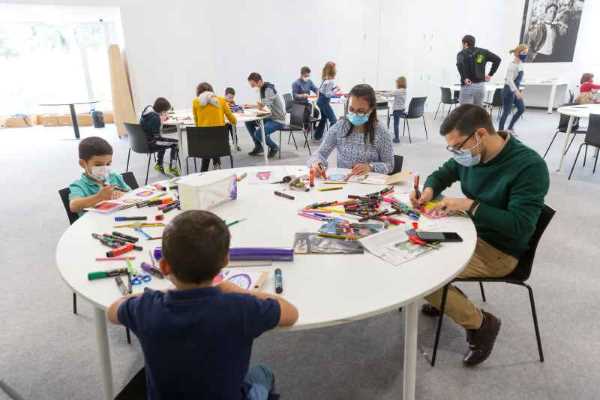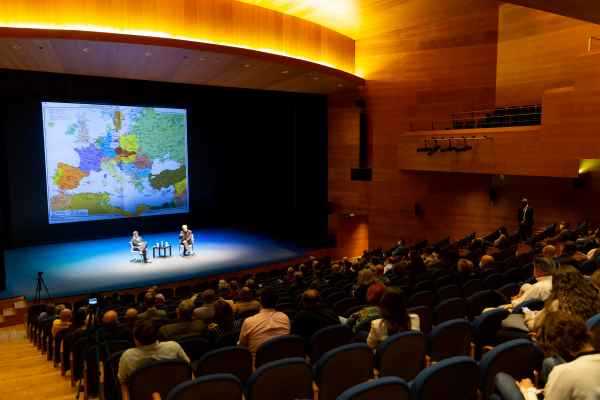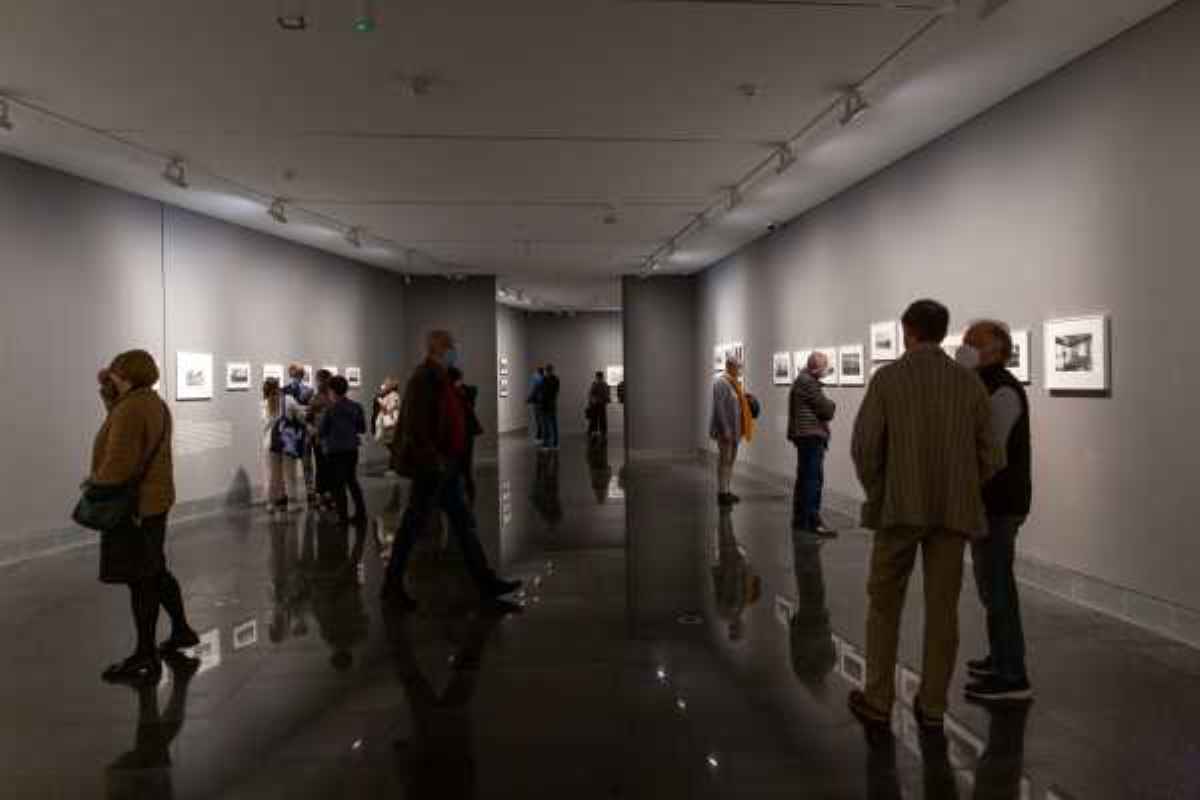Beyond city evolution, thinking together
Basic information
Project Title
Full project title
Category
Project Description
How city evolution impacts culture and society? How to approach the evolution of the city, considered as the biggest collective human creation? Taking Manolo Laguillo’s work -around city evolution and contemplation-, as starting point, the MUN invites everyone to a complete activities program to reflect together from an artistic point of view about these issues and about the crucial and high impact social phenomena that has been called «the empty Spain» but that affects big areas around Europe.
Geographical Scope
Project Region
Urban or rural issues
Physical or other transformations
EU Programme or fund
Which funds
Description of the project
Summary
Around the exhibition Proyectos: Cuatro décadas by Manolo Laguillo, the MUN has developed a rich by-program to reflect together about the city and the impact of humans in human and urban landscape development. Laguillo conceives the city as the biggest collective human creation. He portrays the city usually empty, highlighting the traces and footprints left by their inhabitants thanks to his «passer-by» photograph view. This approach poses lavish reflection questions about our common intention of future together living. Taking this artistic and vital point of view, the education and public programs areas of the Museum proposed a comprehensive program to approach these issues. Also, the spread of unpopulated areas, the decline of provincial capitals that do not belong to the rich periphery of the country, nor to the centre, and their role, with little growth over the last century, places them in the background. The transition with the countryside, an environment that these cities possess, is still quite similar to that of almost all cities in our country a hundred years ago, when industrialisation was practically non-existent.
The program included:
- A masterclass with the artist, where these issues and the artist’s pure Bauhaus approach to the subject has been highlighted.
- A film cycle: documentary films that portray from an artistic point of view, and resources, the transformation of these cities, areas, human landscape and surroundings.
- Children and adolescent workshops to work on the subject using art as communication vehicle.
- A round table where an academic and three artists boosting rural artistic initiatives have discussed the mobilising role of art in empty rural areas.
Originally, the program included a conference with Bêka & Lemoine devoted to the university student’s in collaboration with the architecture and design degree groups, inspired as well in the artists’ project “homo urbanus”. Unluckily, Coronavirus wrecked this initiative.
Key objectives for sustainability
The goals of the program focused on raising the city's evolution, the awareness about human impact on the environment and human cultures, sustainability, and the empty Spain phenomena. The program wanted to recover and disseminate ongoing initiatives that boost circularity and rural development, proposing different ways of living that are more sustainable and circular.
The activities proposed by MUN in this program try to set a light around the reflective/artistic approach set by Manolo Laguillo’s work and exhibition. The artist spoke in his masterclass about sustainability, the footprint and impact of human presence, the dismantling of spaces, the new uses, empty spaces witnessing losses and gains. He stated his artistic and aesthetic approach and invited the visitors to ask themselves about the questions that arise from his works while visiting the exhibition.
In the familiar workshops, devoted to children and young people, environmental sustainability has been a central issue, a proposal to think together about the ways we want to live together. In the contemplation of Laguillo’s work, there is a feeling about something missing, a nostalgia of something that was and is not there anymore. The different groups have worked on these questions through different creative proposals using the newest creative methodologies adapted to the target public.
The cinema cycle included 7 documentary films about this same subject. In three of them, their director approached sustainability amongst other subjects in the colloquia that was celebrated after the viewing. The spectators received a leaflet to reflect on different subjects, sustainability amongst them.
In the roundtable with artists leading country initiatives such as Pueblos en Arte, Territorio Goya and Inland, gave practical examples of sustainability and circularity initiatives, raising awareness and enhancing public knowledge.
428 people joined the different initiatives. Over 18K people visited the exhibition.
Key objectives for aesthetics and quality
The Museo Universidad de Navarra is a place to meet with art, a place where art eases the approach to life and its challenges. From this point of view and following its mission, the Museo programs include activities that enhance reflection, research, creativity and education for everyone.
Aesthetics is always a crucial part of the actions’ objectives, both in terms of beauty and etymological origin of the concept. The proposals in the Museo aim to make every subject and issue 'capable of being perceived by the senses' (from Greek aisthetikós), but also “perceived and understood” (from Greek aisthánesthai) through this experience.
All the actions included in these programs aim to include aesthetics and the excellence in the experience while approaching the issues proposed by the artist and the artists’ works (sustainability, common growth, art as mobilising and development tool, urban development, depopulation, new development initiatives, circularity, these issues awareness and knowledge...).
Around Laguillo’s work, and with the help of our team, the artists of different initiatives and cinema producers and directors, aesthetics and the quality of experience have eased the deepest comprehension of the subjects proposed as main reflection issues.
Key objectives for inclusion
The Museo Universidad de Navarra belongs to the Universidad de Navarra, an institution committed to inclusion and serving the local and the international community. Its policies of universal accessibility have been present in this program.
The building where the actions have been developed is architecturally universally accessible. Public transport, bicycles and walking access are highly recommended and have been improved in recent times.
All the activities are open to the participation of the public, proposing self-reflection and collaborative contributions, as well as together reflection. Our educational team has developed actions adapted for disfavoured and diverse collectives as part of the program, as they usually do.
The actions have been opened to institutional participation, and we have informed the rural development agencies in the area about the celebration of these cycles. The activities have counted with an extensive communication program, both digital and off-line media dissemination.
The actions include different ongoing initiatives, and their leaders have been invited to share their contributions and personal engagement with the assisting people.
8 artists, curators and cinema directors have been invited to share their experience and vital approach on these issues with the public.
Results in relation to category
Regaining a sense of belonging.
The programme has focused on reflecting on the evolution of our environment, on sustainability and the responsibility of human beings in the evolution of the environment in which they live. The ‘empty Spain’, the empty regions, the footprints left by us in our environment have served as reflection subjects adapted to many formats and different target groups.
The places we live in, the cities, the landscape evolution is not something that just happens, but something that talks directly to each of us. We belong to them at the same level they belong to us.
The attending participants have gained a deeper knowledge and consciousness about this mutual ownness, about the role that each of us deploy in our direct environment, and they have had the time and the tools to imagine a different future, to debate about where and how we want to live together. The public has been able to get in touch with the vital attitudes of people that fully transmit a conscious responsibility about wellbeing and well-living.
The public has enjoyed direct access to the artists, the cinema directors and the artistic experiences, witnessing their passion and living first-hand their commitment. They have also approached the situation in their own environment through reflection activities.
The artists themselves have started a professional relationship between them and with the Museum generating mutually beneficial collaboration networks.
The project has convened public-private collaborations.
The project, in summary, has faced these important issues raising awareness and sense of belonging.
How Citizens benefit
In coherence with the mission of Museo Universidad de Navarra, all the events and actions in the program aim to serve the citizens and the civil society.
The different actions and initiatives have been designed to move each specific target, to move the reflection, the engagement, and the action in each of them considering their interests and worries.
All these have been reflected in the satisfaction of the assisting people. The attending visitors have actively participated in the actions proposing ideas, posing questions and reaching a deeper understanding of the common worries treated in each of the activities.
Sustainability, development, and the design of the places where we want to live together is something that appeals to every individual, and in order to achieve our common goals as a society, we need to create awareness and a sense of belonging in each of us. These activities have covered a wide range of age segments, from families with kids up to the eldest. They did not take part in the design of the activities, but have been part of their development and have given their opinion for future editions of such programs in order to work, as we usually do, in a constant improvement compromise.
Physical or other transformations
Innovative character
Departing from art and artistic experience to learn from and think about a universal concern issue is not a common ground but it has proven to be an effective one.
The participation of different institutions, artists, movements, has enriched the program, and has enabled to include different artistic disciplines and points of view to the approach, while creating new bonds and proposing future possible collaboration networks.
Orchestrate a program where individual reflection, masterclasses, and conference dictations as well as collaborative participation are included is a must, if we want to cover all the different contribution situations, as these enable the individual reflection, the common enrichment, and the learning from experts at the same time, in summary, to work at a general and also at a private level at the same time.
Using different art disciplines allows us to approach different ways of moving the public from the visual, the auditive and the kinaesthetic cognitive stimulation.
In sum, the artistic experience is a direct gateway to knowledge, engagement and individual consciousness in universal challenges such as the ones proposed by this project.
Learning transferred to other parties
The public program initiatives around the exhibition have been conceived as an expansion of some of the questions that Laguillo's work brings to the table. The team got to know the project and works of Laguillo thanks to the mediation of the curators and through the access to various publications. From there, a team of professors extracted some of the most pertinent and important themes therein to be confronted in a different way through MUN activities open to the public.
Other authoritative voices or experts with an interest in the subject were invited: filmmakers, artists, academics, representatives of associations… This way, two programmes open to the public were designed: a film cycle and a round table.
The film cycle included 7 documentary films, 3 dialogues with the corresponding director after the visioning of the film, and a leaflet where the public should write their thoughts on the proposed issue and the perspective of the film. The dialogues were lively and the directors could deepen in their approach and their knowledge of the subject.
The roundtable discussion convened an academic professor and three artists leading rural development initiatives through art. The conversation approached the different subjects in an open way, giving space for public opinions and participation.
The invitation of the experts and artists also gave opportunities to cross interaction generating an informal and lavish discussion that perhaps could lead to future collaborations between them.
The education team designed the workshops on the detected themes. Using methodologies such as learning-by-doing, learning-to-think, open ended questions and visual thinking, the groups of children from 4 to 12 years old and their families were invited to participate in creative activities around the proposed themes.



